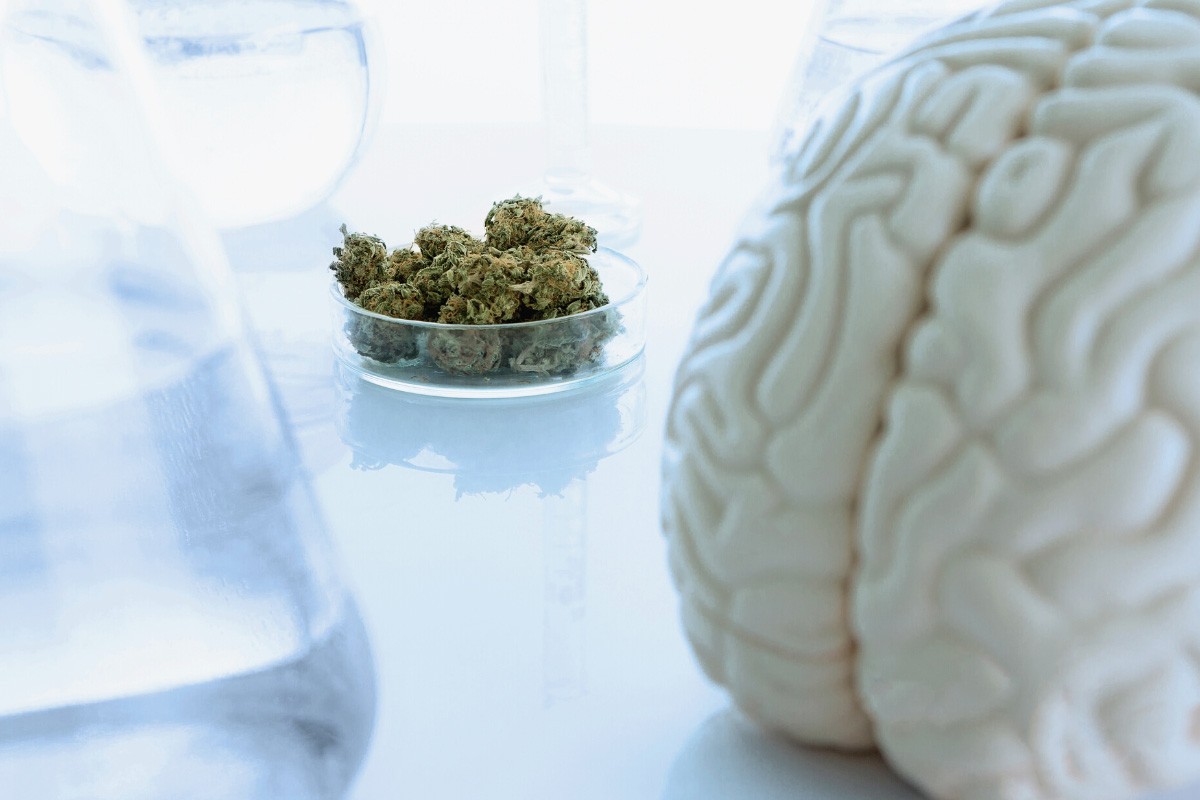In a recent case study, physician Prof. Dr. Franklin Caldera from the University of Pennsylvania, USA, reports on the course of his 43-year-old patient with chronic pain that was poorly controlled with conventional treatments and experienced severe side effects [1]. By the prescription of medical cannabis, the patient was successfully weaned from her opioid medication and her pain intensity could be permanently reduced.
A variety of medications for chronic pain
The patient, we will refer to her as Mrs. Meier, was involved in a severe car accident in 2004, developing a traumatic brain injury. She was also found to have multiple fractures, including to her head, spine and ribs. Prior to the accident, Mrs. Meier had no significant pre-existing medical conditions. After acute care, she developed severe chronic pain in the right side of her head, shoulders and her neck. When asked about pain intensity, she rated it at pain level 8 on a scale of 0 (no pain) – 10 (worst pain imaginable). Mrs. Meier reported experiencing pain relief from heat and massage, whereas the pain aggravated by increased activity and at night. More than 14 years of therapy with multiple prescription medications followed, including the very potent opioid called morphine, which is usually recommended in acute situations with severe or most severe pain. According to the WHO staging system, which is used worldwide for pain management, this is equivalent to the greatest escalation possible. Mrs. Meier began taking the morphine at a daily dose of 60 mg. Soon, this amount was no longer sufficient, and the daily dose was increased to 90 mg of long-acting morphine and 60 mg of immediate-release morphine for breakthrough pain. Over the years, Mrs. Meier had been on a full range of additional medications that have proven effective in (neuropathic) pain management, including muscle relaxants, antiepileptic drugs, as well as antidepressants. Mrs. Meier indicates that all these medications combined were able to reduce her pain by four points on the pain scale, from pain level eight out of ten to four out of ten. However, the patient was only able to achieve this reduction with significant side effects of the medications including drowsiness and constipation. Mrs. Meier additionally expressed the fear of having become addicted to the narcotic pain medications (opioids) over the years.
Treatment initiation with medical cannabis
In 2018, her medical team together with Mrs. Meier decided to start treatment with medical cannabis. Prior to this, she was still to be weaned from taking morphine by successively reducing the daily doses of the long-acting morphine. During withdrawal, Mrs. Meier complained of increased pain and withdrawal symptoms such as chills and diarrhea but was able to discontinue the medication within a month. Her intake of short-acting morphine was also reduced in dose and continued at a low level of 30 mg per day initially. She also otherwise discontinued other medications previously taken. It was now time to start treatment with medicinal cannabis. A cannabis product for vaporization was chosen for Mrs. Meier, which contained a 2:1 ratio of cannabidiol (CBD) to tetrahydrocannabinol (THC). The medicine contained 26.3% CBD and 17% THC, which were divided into 2.5 mg doses per inhalation. Over the next few weeks, Mrs. Meier reported that her pain intensity had decreased from an original level of eight out of ten, to a level two out of ten, as a result of the two inhalations per day. She was subsequently able to discontinue the short-acting opioids completely and reported no side effects from the medical cannabis. Follow-up at 6 months continued to show excellent pain relief. Doctors at the University of Pennsylvania also performed an urine test that showed no opiates in the body but tested positive for cannabis.
Discussion of medical cannabis as part of the pain management approach
In his discussion of the case, Prof. Caldera notes that the use of opioids for chronic pain management has increased at an unusual rate, and the utility of these for chronic pain is questionable. Moreover, with long-term use, dependence can develop in this regard. The use of medical cannabis is particularly useful in cases where established treatment options do not provide sufficient improvement. In most cases, patients would vaporize the cannabis, whereby the THC is converted into its active form. Since this form of activation, as well as the metabolism of the active ingredients in the body, may vary, the individual dose as well as composition of the cannabis product must be selected and tested for each patient; there is no “one-fits-all” solution, he said. Prof. Caldera also notes that in addition to the many positive pharmacological effects of cannabis, there are also potential side effects, although this was not the case with Mrs. Meier. For example, there is a risk of developing psychosis, especially in young patients in their mid to late teens, where brain development is not yet complete. Abrupt discontinuation of medical cannabis could also cause anxiety, irritability, cravings, dysphoria, and insomnia.
Conclusion
Medical cannabis has the potential to provide relief to patients with chronic pain. However, as in the case of Mrs. Meier, a prescription must be reviewed on an individual basis and use must occur under controlled conditions. Medical cannabis is not a first-line pain medication. However, its side effect profile can be considered advantageous compared to traditional potent painkillers such as opioids.








